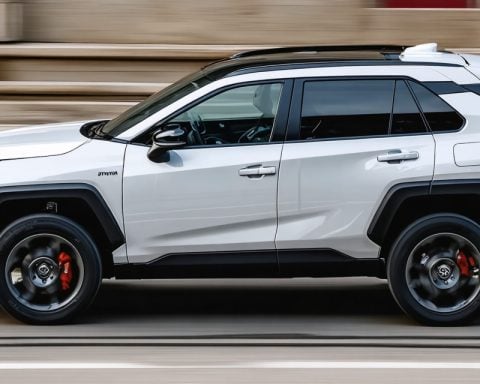General Motors (GM) is traditionally known for its automotive prowess, but a transformative shift is underway that could redefine the company and the broader industry. In a bold move towards sustainable technology, GM has quietly been developing advanced battery recycling capabilities. As electric vehicles (EVs) amass popularity, the environmental impact of battery waste becomes a critical concern. GM’s initiative is not just an addendum to its EV mission—it aims to revolutionize the life cycle of energy storage.
Insight into Battery Recycling reveals a focus on extracting precious metals like lithium, cobalt, and nickel, which are essential for manufacturing new batteries. GM’s masterstroke lies in its partnership with cutting-edge recycling firms using hydrometallurgical processes to efficiently return these materials to production. This could dramatically reduce the reliance on traditional mining, significantly lowering the carbon footprint associated with battery manufacturing.
Why This Matters is simple: If GM succeeds, it sets a precedent for a circular battery economy, slashing production costs and environmental impacts. As the automotive giant invests millions into this technology, the potential for industry-wide adoption becomes tangible. This initiative not only enhances GM’s commitment to a sustainable future but also solidifies its role as a leader in the innovation of clean technologies.
In looking towards a brighter, greener future, GM’s battery recycling advancements could be the pivotal factor. If consistent progress is made, we might well witness the dawn of a new industrial standard.
GM’s Bold Step: How Battery Recycling Could Transform the EV Industry
In recent years, the shift toward electric vehicles (EVs) has raised pressing environmental concerns, particularly regarding battery waste. As one of the automotive industry’s leading players, General Motors (GM) is tackling this challenge head-on with innovative battery recycling strategies that promise to reshape the landscape of energy storage and production.
Innovations in GM’s Battery Recycling
GM’s approach to battery recycling goes beyond traditional methods by leveraging advanced hydrometallurgical processes. These processes focus on reclaiming essential materials like lithium, cobalt, and nickel from used batteries, thus allowing these valuable resources to be efficiently reintroduced into the supply chain. This recycling method not only reduces environmental impact but also minimizes the need for mining new materials, which is often associated with high carbon emissions and ecological disruption.
Environmental and Economic Impacts
The potential environmental benefits of GM’s battery recycling advancements are significant. By closing the loop on battery production and end-of-life management, GM aims to establish a circular battery economy. This sustainable model could drastically cut production costs and enable more affordable and environmentally friendly EV solutions. With reduced reliance on mining, the initiative aligns with global goals to decrease industrial carbon footprints and encourage sustainable practices across sectors.
Industry-Wide Implications and Predictions
If GM’s battery recycling model proves successful, it could pave the way for widespread adoption across the automotive and broader technology industries. Other companies may follow suit, embracing similar sustainable practices that reduce waste and enhance resource efficiency. This forward-thinking approach by GM underlines its commitment to leadership in eco-friendly innovations.
The Road Ahead for Battery Recycling
As GM continues to invest heavily in recycling technology, industry experts predict that these efforts will likely lead to new standards and regulations for battery disposal and recycling. By setting new benchmarks, GM not only strengthens its market position but also promotes a greener, more responsible future for the automotive sector.
In conclusion, GM’s venture into battery recycling is more than just a component of its EV mission—it stands as a potential industry changer. By addressing critical environmental concerns while demonstrating economic advantages, GM sets the stage for others to follow in transforming how we think about the lifecycle of energy storage technologies. With continued progress, this initiative could indeed herald a new industrial standard for sustainability in the automotive world.













